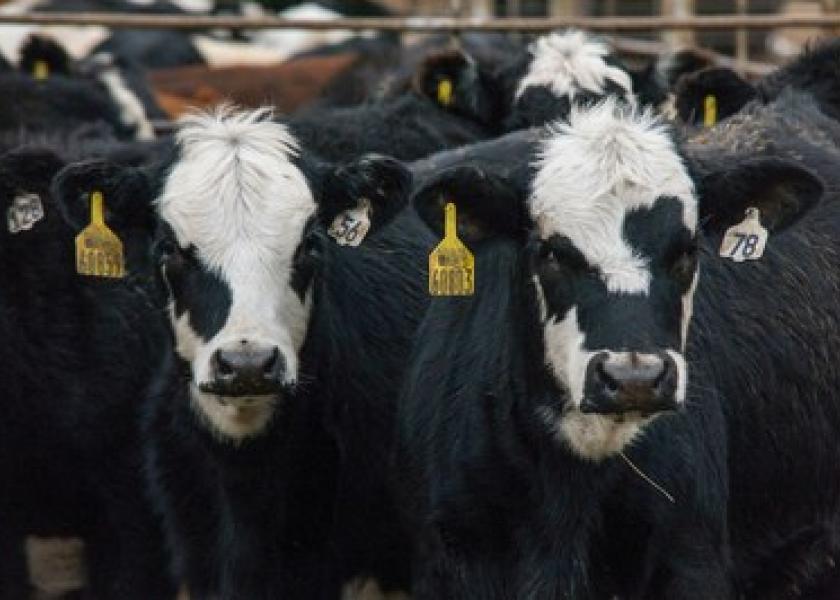Data-Driven Decisions: Strategic Health Management

While winter is far from over, spring is getting closer every day. We are already enjoying 30 more minutes of daylight than in early January. With higher feed costs this winter, the anticipation of spring and green grass is high.
The promise of spring forage brings the second wave of cattle processing events to the forefront. Lightweight calves will once again find friends in the market as seasonal demand for grass cattle increases.
If you are preparing to process those spring grazing cattle or just revisiting your arrival protocols from last autumn, the insights from a recent paper by Veronica Munoz and her co-workers at West Texas A&M University provides an interesting test of several common practices.
This Applied Animal Science paper evaluated the efficacy of antibiotic metaphylaxis in high-risk calves while also looking at respiratory vaccination timing. A particularly interesting aspect of the article looked at the role an ear tag played in health and performance. Nothing special about the tag itself, just documenting whether or not the calf was tagged prior to arriving at the feedyard.
Previous work shows antibiotic metaphylaxis is an effective preventative to respiratory disease and leads to improvements in feedyard performance. What is increasingly debated is the ability of high-risk calves to respond to respiratory vaccines when administered at arrival.
While many veterinarians and consultants continue to recommend vaccination on arrival the recent debate is focused on the role stress can play in a vaccine response. Short term stress (<24 hours) may enhance the immune response while longer term stress, consistent with the process of weaning, commingling, and shipping may be disruptive to arrival vaccine efficacy. A quick read of most vaccine labels supports the premise as the product is intended to vaccinate healthy cattle against disease.
The authors included four groups: 1.) untreated, unvaccinated controls, 2.) vaccinated at arrival and boostered 14 days later, 3.) metaphylaxis at arrival and 4.) combination of metaphylaxis and vaccination.
Metaphylaxis reduced first pull BRD to 18.5% while 51.2% calves without preventative antibiotics were diagnosed for BRD. Not only was BRD reduced by metaphylaxis but the days to first BRD diagnosis was 11.3 days longer. Delaying the BRD “break” later in the feeding period allows calves to increase feed intake and acclimate to the environment potentially enhancing the ability to recover from disease when diagnosed.
Performance over the 56-day feeding period followed the health outcomes, control and vaccinated only calves gained 0.56 lb / day less than groups receiving metaphylaxis. While not statistically significant the lowest incidence of BRD and greatest ADG was observed in the combination metaphylaxis and vaccination group.
The authors concluded metaphylaxis improved health outcomes in high-risk calves while the 5-way respiratory vaccine alone did not. These tangible conclusions were supported by behavior data collected using ear tags. Increased rumination time was observed in groups receiving metaphylaxis from day 9 to 20 of the feeding period.
By documenting the presence of an ear tag at feedlot arrival the West Texas A&M team converted a simple data point into a management indicator. An ear tag tells the new owner one thing, the calf has been handled at least once in their life. One might assume the management of tagged cattle is improved compared to untagged but there are no guarantees.
The untagged calves were 18% steers, while tagged cattle were 34.5% steers further supporting the idea of greater management in tagged cattle. This castration effect confounds the data a bit because the bulls were banded at arrival. Calves arriving at the feedyard with a tag had a lower incidence of BRD (25.2% vs 37.6%) and gained 0.29 lb / day more than untagged calves.
The number of calves in the experiment did not allow the authors to test the vaccine and metaphylaxis treatments against the presence of a tag. For those starting to purchase or process grass cattle, recording a simple, visual data point like an ear tag may inform current and future health protocols as well as your buying decisions. Imagine the day when we can share actual data across operations using the technology within those tags.







